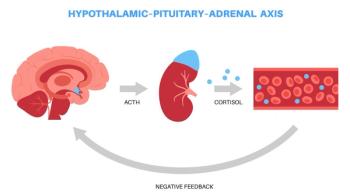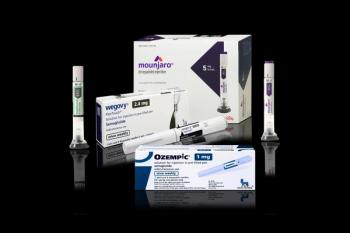
ADA 2025: Mifepristone lowered HbA1c levels by about 1.5% over 24 weeks vs placebo among participants with hypercortisolism and inadequately controlled T2D.

ADA 2025: Mifepristone lowered HbA1c levels by about 1.5% over 24 weeks vs placebo among participants with hypercortisolism and inadequately controlled T2D.

Lundbeck announced the designation today and said it is expanding an ongoing phase I/II clinical open label trial of the investigational mAb in adults with classic CAH.

ADA 2025: The combination of the GLP-1 RA and novel monoclonal antibody yielded 92.8% of total weight loss from fat mass and 22.1% decrease in baseline weight.

ADA 2025: Orforglipron lowered HbA1C by an average of 1.3% to 1.6% across doses, with improvements seen as early as 4 weeks, in a phase 3 trial.

ADA 2025: An intervention to emphasize weight-related care in primary care settings eliminated weight gain at the population level, researchers report.

Weight cycling significantly raises heart failure and metabolic disease risks, independent of baseline overweight, underscoring the importance of stable weight strategies.

ADA 2025: Insulin efsitora proved noninferior to daily insulin glargine for reducing HbA1c, resulted in fewer episodes of hypoglycemia, and required fewer dose adjustments.

Advances in obesity pharmacotherapy will be the focus of numerous late-breaking science sessions at ADA 2025; snapshots of 5 studies follow.

The investigational dual GLP-1/GLP-2 agonist led to 11.6% weight loss over 28 weeks with no lifestyle changes, showing strong safety and tolerability in the trial.

Your daily dose of the clinical news you may have missed.

For individuals with T2D, findings are more than numeric; a 5-mm Hg reduction in SBP reduces stroke risk by 14%, CV events by 6%, and heart failure by 8%, authors wrote.

The American College of Lifestyle Medicine recently published "that guideline," and lead author Richard Rosenfeld, MD, MPH, MBA, says the timing was right.

Both oral and subcutaneous formulations of the long-acting GLP-1 and amylin receptor agonist move into stage 3 clinical trials following positive feedback from regulators.

Your daily dose of the clinical news you may have missed.

These 14 recommendations from the American College of Lifestyle Medicine comprise the core of the first-ever guideline centered on lifestyle change as a first-line intervention.

High discontinuation rates as well as lower maintenance dosages of semaglutide and tirzepatide were among the independent predictors of lower real-world weight loss.

Novel guidelines include specific strategies that support the prescription, implementation, and monitoring of lifestyle changes to reach glycemic control and, possibly, disease remission.

Donna Ryan, MD, highlights how the media has helped to reframe obesity as a chronic disease and how antiobesity drugs are transforming metabolic disease treatment.

Your daily dose of the clinical news you may have missed.

Interim results from COURAGE trial suggest combining semaglutide with muscle-preserving antibodies significantly enhances fat loss while preserving lean mass in obesity treatment.

Adults with both HTN and T2D had more than twice the risk of all-cause mortality and nearly three times the risk of cardiovascular mortality, according to new data.

For every 10% increase in energy from high-quality carbohydrates, the odds of healthy aging rose by 31%, according to an analysis of data from the Nurse's Health Study.

Enobosarm added to semaglutide shows promising results in preserving muscle mass while promoting fat loss in older adults, according to developer Veru, Inc.

GLP-1 receptor agonists showed promise in lowering obesity-related cancer risks in adults with type 2 diabetes, particularly colorectal cancer.

Semaglutide was associated with a significant reduction in risk for major adverse cardiovascular events after just 3 months of treatment in a population with established CVD.